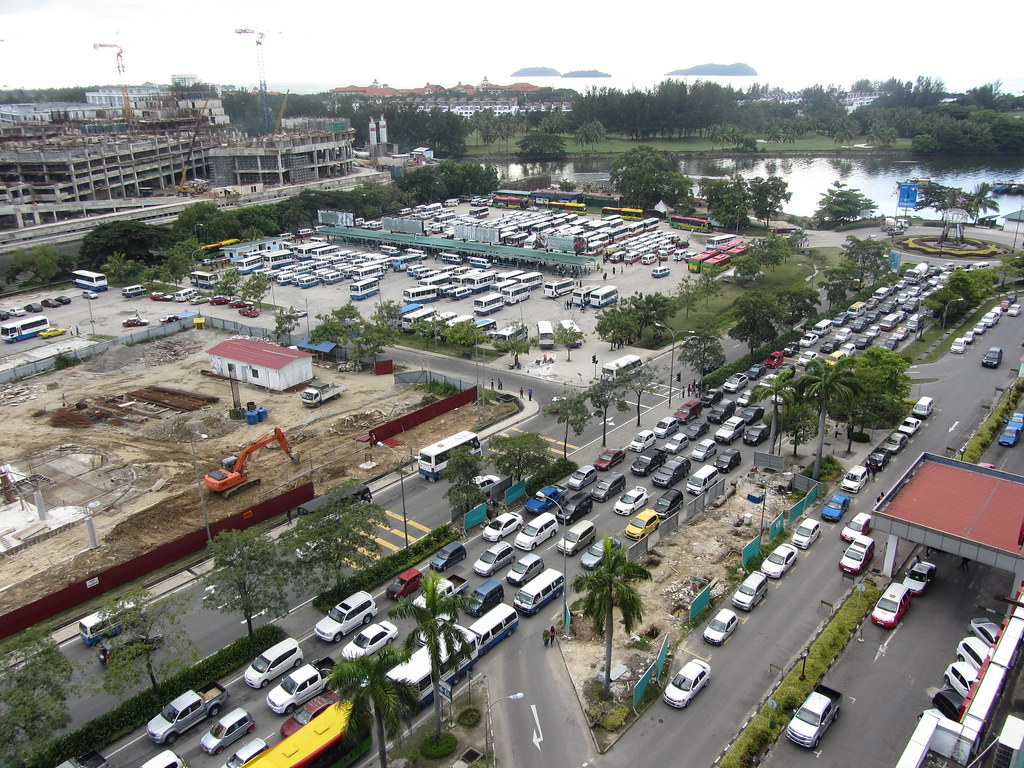KOTA KINABALU - Kota Kinabalu’s traffic has experienced much change over the years and today traffic congestion is a daily nightmare especially for the residents living in the city centre and neigbouring areas.
Spending 45 minutes or even up to two hours to get to work in the city and back is no longer unusual for those living outside the city, except during school holidays.
Radio segments on traffic in Kota Kinabalu and surrounding areas have become indispensible for city dwellers in planning their journey each day.
Looking back, though there were less alternative routes in the past, traffic congestion in the city was still under control.
Today, its different, an abundance of vehicles on the road and inefficient public transportation are just some of the contributing factors of this problem.
According to residents, the traffic situation in the city and itssurroundings with almost one million people is becoming more critical by the day.
Lecturer Khairunnisa Islami said traffic in the areas of Sepanggar and Tuaran heading towards Kota Kinabalu builds up as early as 5.30 am.
“During school holidays, however, traffic is under control,” she said.
Meanwhile, civil servant Fairuz Saidi spends between 45 minutes to one hour to reach home although her office is only seven kilometres away from a house in Indah Permai, Manggatal.
Charlie Luke from Tamparuli leaves home by 5.00am to skip the congestion and get to his office in Donggongon, Penampang, early.
“Now more people live outside of Kota Kinabalu but work in the city. Despite our growing population, we still don’t have a reliable public transportation system,” he said.
Mohd Ikram Aidi from Papar, said improving intercity public transportation and train facilities could help reduce traveling time.
“This way the people will opt for public transportation, which reduces travel costs compared to using private cars,” added the civil servant who works in Kota Kinabalu.
Kota Kinabalu City Hall (DBKK) Traffic and Public Transport Department director Kalvin Liaw said traffic flow and the number of vehicles entering the city today is unlike 16 years ago.
Statistics recorded in 2000 showed only 77,000 vehicles enter and leave the city in a day.
Now, an estimated 140,000 vehicles ply the city’s streets daily based on cumulative calculations especially looking at the fact there has been three to four percent increase in car ownership each year.
The increase in vehicle ownership is the reflection of people’s improving affordability as well as more aggressive car sales marketing and attractive offers.
Furthermore, city residents feel that taking their own car is morecomfortable, faster and more efficient than taking public transportation.
“If people continue to choose to drive, traffic congestion will continue,” he added.
However, integrated cooperation from relevant agencies is needed in resolving traffic woes as not all roads are under the jurisdiction of the DBKK and most main roads are under the Public Works Department, continued Kalvin.
Commenting further, Kalvin said it would be difficult to resolve traffic congestion in a developing city if plans were focused on conventional approaches such as road widening and flyovers.
Kalvin forsees that these mechanisms are not the best answer for the present era, though it can lessen the impact of traffic congestion especially at junctions.
“When population increases, so does the car ownership. To tackle this, we need to look at other approaches and not just conventional methods like road widening and building flyovers.
“These are only short-term solutions. Traffic may be smooth for about a year after the road and flyover is ready, but then congestion will appear again soon after.
“Road widening and flyovers are necessary, but we will come to a point that there is no more room for infrastructure development,” he said.
Therefore, for Kalvin, a balanced and proactive town planning approach is needed as the desire to buy and own personal cars could not be curbed.
The city hall had realised that there is a need for a balanced approach for a conducive traffic flow in Kota Kinabalu, which will also improve the Kota Kinabalu’s image as a first-class city.
To make this happen, emphasis should be given to improving the quality of public transportation services to attract more users.
“Currently, the traveling time of public transportation such as buses is not coordinated and there are also too many bus operators plying the same route.
“If buses are scheduled for every 30 minutes, there may be buses that have passengers and some do not and (usually) buses with no passengers will not move until it is fully occupied.
“We will face problems coordinating bus traveling time because each bus operator wants passengers as they are their source of income,” he added.
According to Kalvin, it would be difficult to step up the quality of public transportation services in the city if such practices continue.
Because of this, a restructuring of public transportation infrastructure and facilities needs to be planned in detail to ensure better services.
This consists of developing integrated bus terminals, bus stops and pedestrian facilities that are strategic, conducive and safe for users from their home and workplace to the bus stop.
In providing such infrastructure, he said, the city hall would upgrade the public transportation system to be more efficient and user-friendly as well as bring it to a level at par with other cities.
Kalvin noted that the essence of empowering public transportation has been listed in a blueprint outlined by DBKK in efforts to end the traffic nightmare faced by city dwellers and make Kota Kinabalu a livable city. — Bernama


No comments:
Post a Comment